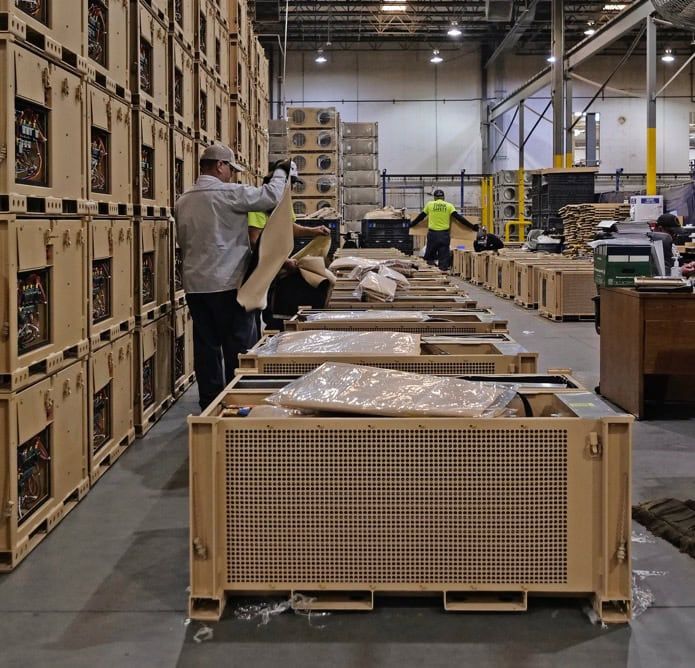When people think of military technology, the focus usually falls on vehicles, weapons, or communication networks. Less attention goes to the quieter systems that allow soldiers and equipment to function day after day. A mission often depends on whether the environment can be controlled and stabilized. For this reason, the custom environmental control unit has become one of the core technologies in modern operations, helping both people and sensitive equipment withstand demanding conditions.
Why Environmental Control Is More Than Comfort
Troops frequently deploy to climates that push human endurance to its limit. Desert heat, Arctic cold, or tropical humidity present immediate and lingering threats. When the environment isn’t managed, soldiers may lose concentration, become overly fatigued, or even suffer heat strokes and hypothermia. The same goes for the gear: electronics, medical supplies and command systems can fail when temperatures and humidity levels spike or drop. Climate control serves two related purposes: it protects the individual soldier from health complications and it keeps critical data systems, pharmaceuticals and mission gear in usable condition. What seems like a comfort feature is, in fact, a mission-readiness and life-preserving necessity.
From Off-the-Shelf to Custom Engineering
Standard HVAC units were never meant to go where military forces go. They end up bulky, heavy and wasteful because they’re designed for permanent buildings, not for mobility. A custom environmental control unit, however, thinks mission first. Whether tucked into a compact tactical tent, outfitted for a mobile field hospital, or spread across a sprawling base camp, it provides the same essentials: airstream efficiency, clean filtration and low steady electrical draw, all packed to ride in convoy and survive rough off-road bumps.
Alaska Defense gives you those adjustable packages. The company builds modular units, each one ready to fit inside the same shelter pocket regardless of mission. The designs put flexibility first, letting a single unit scale up or down without lighting up the logistics trail. Extra power and shelter gear can stay on the truck and energy and supply chains remain on even footing when the region is remote or spare parts for maintenance are coins in the supply room jar.
Technology Adding New Layers of Capability
Today’s environmental units are getting way smarter. New sensors peek inside and learn the occupancy patterns, nudging airflow and cooling up or down to muddle or mute the energy footprint. Renewable energy tie-ins let lightweight solar panels step in when heavy drums of diesel are still miles away and when the convoy is two average mechanics who gag and bob. More advanced filtration claws at dust, fine sand and post-detonation smoke that used to hover in the field. Together, the upgrades make the units not just heaters and coolers but hidden detachments managing the base or the climbing perimeter purely once attention is farther off.
Most of the cutting-edge tools we see today began as bright ideas in civilian fields like smart building management and renewable energy. When scientists and engineers from the military talk with their civilian counterparts, ideas skip the slower development phases and jump right to useful prototypes. For start-ups and smaller tech firms, that overlap means they can take what they already know and plug it into a fresh problem in defense, cutting the bar to a new market way down.
Beyond the Battlefield
All these hero systems and gadgets work their magic far from rocket launches and battlefields. Relief crews setting up after a hurricane or earthquake roll out portable shelters that nurse both the supply of stepped-on medicine and the doctors’ backs back to normal temperature and humidity. A refugee camp with a tent holding a temporary clinic can store life-saving vaccines in the sweet spot of the temperature range, all thanks to the civilian tech that the soldiers’ tech “borrowed.” And in ice fields, scientists rely on the same dependable heating and cooling systems to zap their gear and their own workspace back to life, letting sensitive instruments and gentle researchers safeguard delicate work and limbs.

This demonstrates how technologies first developed for the military can take on broader applications. Military-grade durability and efficiency can directly benefit humanitarian and civilian operations. For entrepreneurs, this creates opportunities to design products that serve both defense and civilian markets.
A Space for Entrepreneurial Innovation
At first glance, the defense sector can feel locked behind complex rules and exacting standards. Yet, the world of environmental-control systems reveals paths where small businesses leave an outsized mark. Startups have already cut weight with lighter enclosures, introduced modular parts that technicians can swap in minutes and engineered units that sip power yet stay mobile. Every innovation bends the balance toward easier rollouts and lower lifetime costs.
Small companies tend to pivot faster and dare to play outside the box. Their quick-working prototypes can nudge big-budget programs to adopt new tech earlier than planned. Online platforms guide founders through the maze of government contracts, direct them to the right grants and show them how to shape products that military and civilian markets both find value in.
Coming missions will set even steeper performance targets. As weather swings become wilder, environmental-control systems will have to deliver both flexibility and ironclad stamina. Sensors and machine learning will run predictive maintenance, spotting trouble before it costs a dime. By weaving renewable power into the architecture, units can extend missions without the weight and risk of extra fuel. Fabricators will use futuristic materials to cut transport expenses without sacrificing durability.



